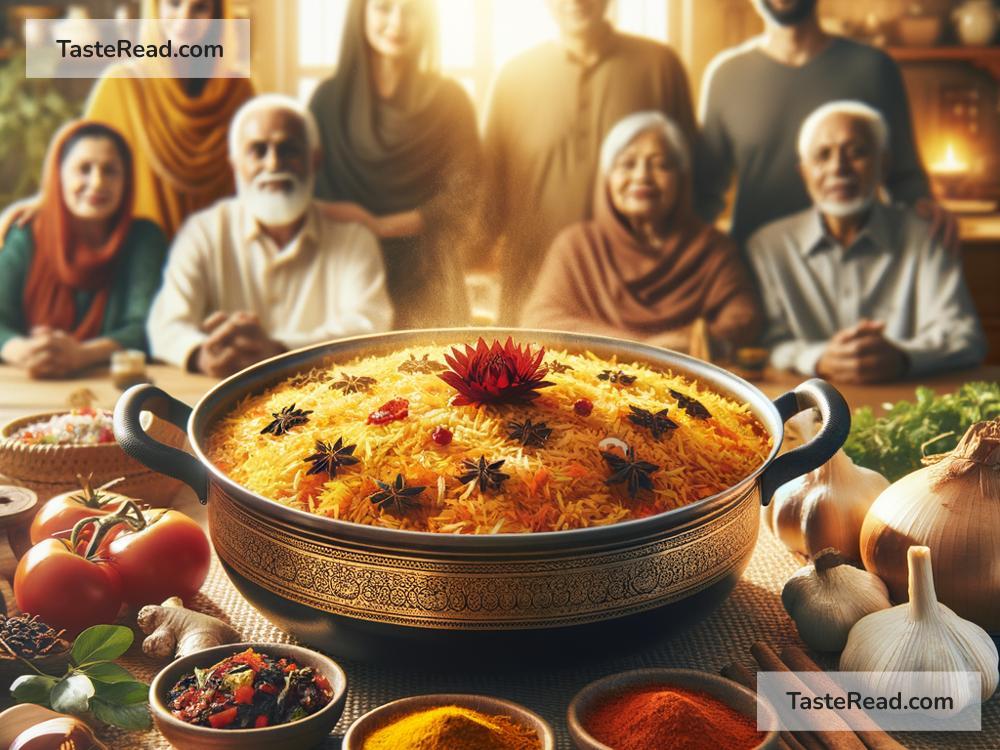Biryani: A Timeless Pakistani Treasure Passed Through Generations
When people think about Pakistan, one of the treasures that often comes to mind is its food. Among the rich array of dishes, biryani stands out as a true symbol of culinary art, culture, and connection. Biryani isn’t just a dish; for many Pakistanis, it is a cherished tradition passed down from grandmothers and mothers to children. It is a recipe that carries history, love, and the unique flavors of home.
What is Biryani?
Biryani is a dish made with fragrant basmati rice, tender pieces of meat or vegetables, and a medley of spices. It is often cooked in layers, with rice and meat coming together to create a harmony of flavors. While the basic ingredients remain similar, different regions and families add their own twist to this dish, making every biryani recipe slightly different and uniquely flavorful.
In Pakistan, biryani isn’t just food—it’s an experience. Whether it’s served at weddings, celebrations, family gatherings, or even during a regular dinner, biryani is a dish that brings excitement to the table. Its aroma fills the kitchen, drawing everyone in, and no one can resist taking a second—or third—helping.
The Story of Generational Recipes
One beautiful thing about biryani in Pakistan is how recipes are handed down through generations. If you ask a mother or grandmother about their biryani, they’ll likely say, “This is how my amma (mother) used to make it.” There’s a pride in continuing the legacy while adding their own touch.
For many families, biryani recipes aren’t written down. Instead, they’re shared through bonds, conversations, and watching loved ones cook. Children often grow up in kitchens, watching their mothers mix spices, marinate meat, and taste-test rice until it’s just right. Over time, they learn the art of cooking biryani through observation and practice.
Every family recipe feels personal. Some prefer potatoes in their biryani (a common favorite in Karachi households), while others might focus on rich saffron flavors. Some use chicken, others goat meat (mutton), and some make vegetarian or fish biryani. These variations reflect each family’s taste, history, and the resources available to them.
The Regional Flair of Pakistani Biryani
Pakistan loves its biryani, but each region has its own way of making it special:
-
Karachi Biryani: Karachi is known for its spicy biryani, often made with chicken or beef and pieces of potato. The bold spices and vibrant colors make it one of the most popular biryanis in the country. The use of garam masala (a blend of ground spices) and fresh chilies gives it a kick that’s unforgettable.
-
Sindhi Biryani: Sindhi biryani takes things up a notch with even more spices and a tangy twist. Tomatoes and yogurt are key ingredients that add flavor and depth. It’s known for being a little extra spicy, with every bite bursting with zest.
-
Punjabi Biryani: Punjab’s biryani is rich and hearty, often cooked with succulent mutton and lots of desi ghee (clarified butter). Punjabi households take pride in their biryani’s aroma and richness, making it a perfect dish for special occasions.
-
Baluchi and Quetta Style Biryani: In parts of Balochistan, biryani is often enriched with dried fruits or nuts, adding a touch of luxury to the dish. You’ll also find simpler, less spicy versions in Quetta, where the focus is on natural meat and rice flavors.
-
Seafood Biryani in Coastal Areas: In coastal cities like Karachi and Gwadar, seafood biryani is a favorite. It’s made with fish, prawns, or crab alongside the traditional spices, creating a delightful fusion of earthy and oceanic flavors.
Cooking Biryani with Love
What makes biryani truly special is the love and care that goes into cooking it. It’s not a “fast food” dish; biryani takes time, patience, and precision. From washing and soaking the rice to marinating the meat, every step matters. Spices need to be balanced just right—too much of one spice might overpower the dish, while too little could make it bland.
One fascinating step involves layering the biryani in a pot. Cooked rice is layered with the meat mixture, and sometimes saffron-infused milk is poured over the top. The pot is sealed tightly, and the biryani is cooked on low heat (a method called dum), allowing the flavors to blend beautifully. This is the moment when aromas start filling the air, building anticipation.
The Emotional Connection
For Pakistanis, biryani is tied to beautiful memories. It’s the dish served at family dinners that brought everyone together after a long day. It’s the potluck contribution that always became the crowd favorite. It’s the meal people crave after being away from home for months or years. There’s comfort in every bite.
When you taste a family’s biryani, you’re not just tasting food—you’re tasting years of tradition, love, and creativity. It’s a dish that connects generations, reminding people of their roots.
Passing the Legacy Forward
As more people move to cities, adopt modern cooking methods, or live abroad, biryani recipes continue to evolve. Families may use pressure cookers instead of traditional pots or adapt ingredients to suit availability. Yet, one thing remains unchanged: biryani is made with love, and it carries with it the essence of home.
In a world that’s always changing, biryani stays constant—a flavorful reminder of family traditions, cultural heritage, and the joy of sharing food.
So next time you’re served biryani, remember: it’s more than just rice and meat. It’s a story, a legacy, and a celebration passed down through generations. And somewhere, someone’s grandmother would be proud.


